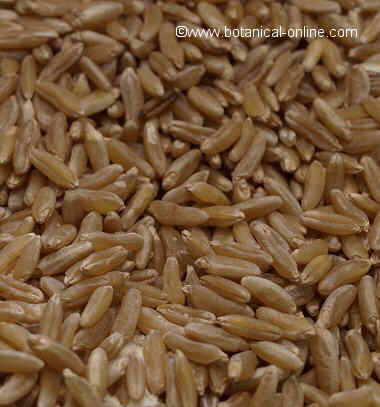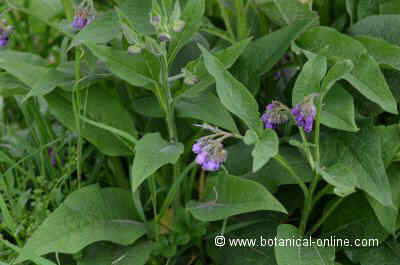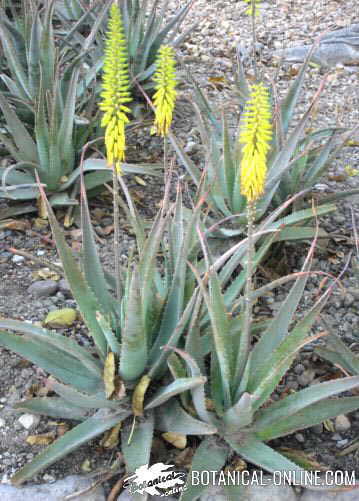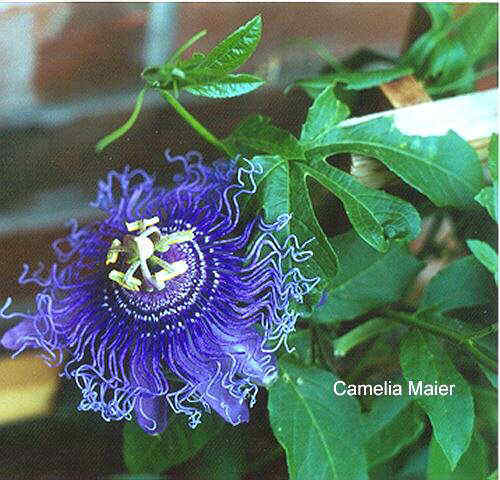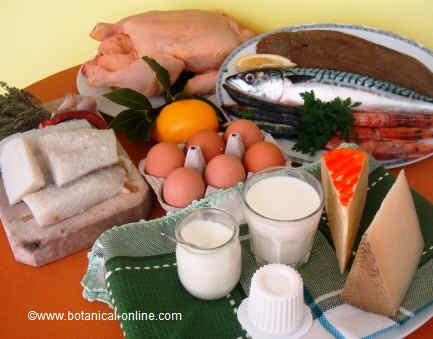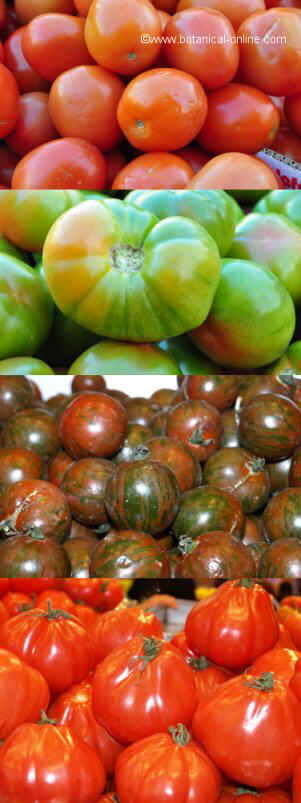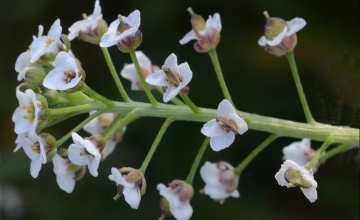Contents [show]
Characteristics, history and production of mangos
MANGO TREE CHARACTERISTICS
What are mango trees like?
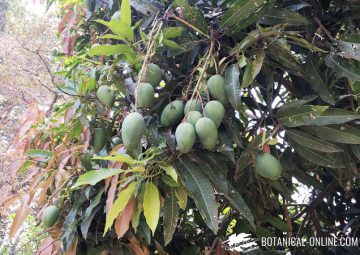 A mango (Mangifera indica) is an evergreen tree that can reach 20 meters in height, but usually is half this size, especially when cultivated outside its place of origin.
A mango (Mangifera indica) is an evergreen tree that can reach 20 meters in height, but usually is half this size, especially when cultivated outside its place of origin.
It belongs to the Anacardiaceae family, which is known because other fruit trees such as cashews (Anacardium occidentale) or pistachios (Pistacia vera) and industrial medicinal plants less known as mastic (Pistacia lentiscus) or garden trees as the false pepper or Peruvian pepper (Schinus molle).
Mangoes have erect stems growing very fast when weather conditions are favorable. Tough leaves, lanceolate, up to 30 cm long, bright green, darker than the underside, petiolate and entire.
Mango flowers are very small, yellowish or reddish gathered in very large panicles of 400 to 4000 flowers. The flowers attract a lot of insects, especially flies and produce a characteristic odor. They may result allergic to some people.
What are mangoes?
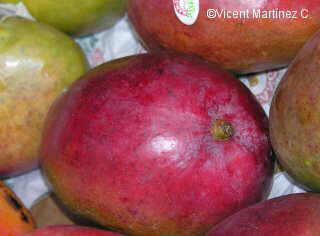
Photo of mangoes
Mangoes or mangos are the fruits of mango tree. they are oval drupes of varying size, some little bigger than an almond, others come to reach two pounds.
Its skin is light green at first and gradually becomes reddish brown as it matures.
The skin should not be eaten because it contains a liquid that is irritating.
Inside the fruit appears a single bone.
Mango meat is juicy, sweet, fibrous, with a deep aroma and great taste.
Origin of mango
- The word comes from the Tamil “mangay” which subsequently led by Portuguese influence in “Manga”.
- Mangoes are from Southeast Asia, particularly from northern Burma and northeast India, where today we still find them in the wild. The first documents that mention this tree and its fruit is written in Sanskrit and was found in India 6000 years ago.
- The original wild mangos produce a fruit the size of a plum. They are extremely fibrous and have a very strong taste of turpentine, well above the softer taste that present today. This makes them unpalatable.
- From the wild species, by selection of species, current varieties were obtained that have nothing to do with the primitive ones.
- From their original home they spread to other places and, at present, they can be found cultivated in most tropical and subtropical regions of the world.
History of mango
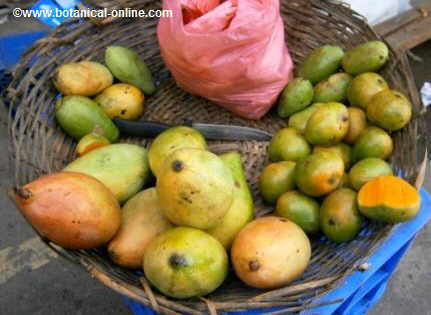
Photograph of different types of mango in a Southeast Asian market
- Mangoes have been cultivated since ancient times and there is a great documentation in the East cultures of the importance it plays in these cultures.
- In India, where it was cultivated over 4000 years ago, the tree is considered sacred and it is attributed with magical properties, because its wood is use to prepare piles to burn the dead. Legend explains that Buddha found inspiration and peace sitting in a mango orchard that had been offered to him as a gift.
- It is very usual for lovers in this country to express their wishes under a mango tree. Marriages are made in the presence of mango leaves as a symbol of fertility and love.
- People brush their teeth with mango twigs on special days. In rural areas people will adorn the doors of the houses where a birth has occurred with branches of mango.
- Long ago, in this country, a yellow dye was made with the urine of cows fed on mango leaves. Later, this practice was banned when it was discovered that mango leaves were toxic, .
- Today, during the harvest season, in India there is a real passion about this fruit and, as they have so many varieties, many discussions occur in families on which one is best.
- During the Muslim empire mango was a very much appreciated fruit. This was not only a common fruit on the table of the most powerful people but, a very palatable beverage was produced with mangoes that required half a year of preparation.
- In the sixteenth century, Portuguese sailors brought this fruit to Africa. The first European reference is that one written by a friar named Jordan in the year 1328.
- In spite of the importance of mango in the East cultures, and even being the third in the world in order of production, it has never been widely recognized in the Western market.
The production of mangoes in the world
Today, the world’s largest producer is India where the crop is more abundant, followed by Brazil, China, Thailand and Mexico.
The first country in Africa is Nigeria, ahead of Congo and Egypt.
In general, mangoes are not very demanding with the soil and can be adapted in any favorable climate.
![]() More information on mangoes.
More information on mangoes.


